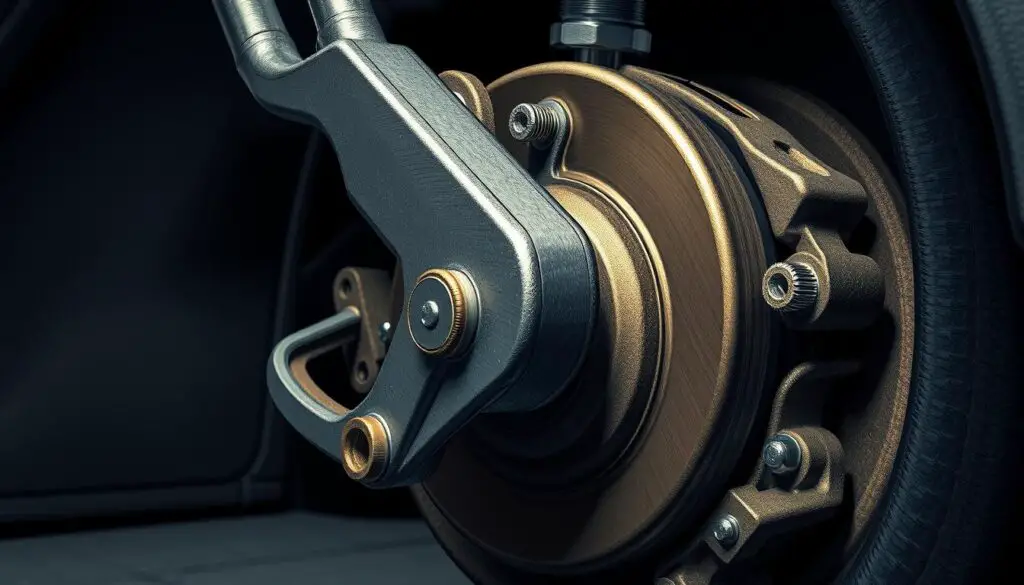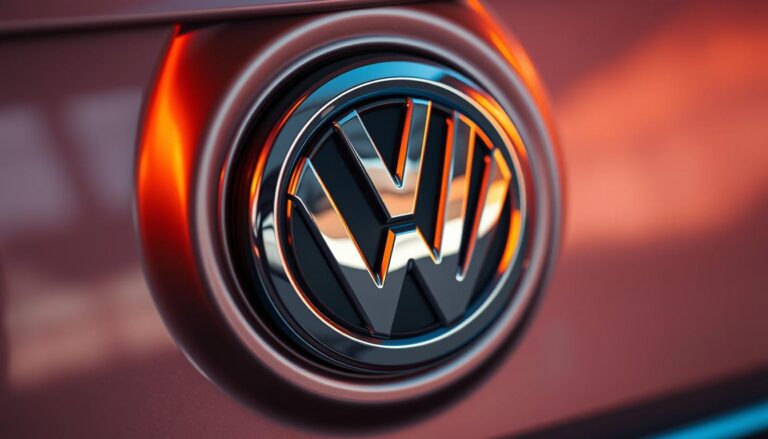A stuck handbrake can be a frustrating issue for any driver. Understanding car handbrake repair and knowing how to address parking brake issues is crucial for maintaining your vehicle’s safety and functionality.
The handbrake mechanism is designed to keep your vehicle stationary when parked. However, it can become stuck due to various reasons, including corrosion or mechanical failure. Knowing how to release a stuck handbrake can save you time and potentially prevent more costly repairs down the line.
Key Takeaways
- Understanding the causes of a stuck handbrake is crucial for effective repair.
- Regular maintenance can help prevent parking brake issues.
- Knowing the steps to release a stuck handbrake can ensure your vehicle’s safety.
- Car handbrake repair may require professional assistance in some cases.
- Addressing parking brake issues promptly can prevent further damage.
Understanding Car Handbrakes and Why They Get Stuck
Understanding how a car handbrake functions is crucial for diagnosing issues when it gets stuck. The handbrake, also known as the parking brake, is a critical safety feature that prevents the vehicle from rolling or moving when parked or during emergency situations.
What Is a Handbrake and How Does It Work
A handbrake is a system used to keep a vehicle stationary, especially on slopes or inclines. It works by engaging a mechanism that locks the rear wheels (in most cases), preventing the vehicle from moving. The handbrake is typically operated by a lever or button inside the vehicle.
Traditional vs. Electronic Parking Brakes
There are two main types of handbrakes: traditional mechanical handbrakes and electronic parking brakes. Traditional handbrakes use a cable system connected to the rear brakes, operated manually by a lever. Electronic parking brakes, on the other hand, are operated by an electronic button and automatically apply the parking brake when the vehicle is stopped.
| Feature | Traditional Handbrake | Electronic Parking Brake |
|---|---|---|
| Operation | Manual lever operation | Electronic button operation |
| Mechanism | Cable connected to rear brakes | Electronic control unit |
| Maintenance | Regular cable adjustment needed | Less maintenance, self-adjusting |
Common Causes of Stuck Handbrakes
A handbrake can get stuck due to several reasons, including corrosion of the brake cables, lack of maintenance, or mechanical failure within the handbrake system. Regular maintenance and inspection can help prevent such issues.

Signs and Symptoms of a Stuck Handbrake
The symptoms of a stuck handbrake can vary, but being aware of them is key to maintaining your vehicle’s health. A stuck handbrake can manifest through various signs that indicate a problem.
Visible Indicators on Your Dashboard
Modern vehicles are equipped with sophisticated dashboard warning systems. A stuck handbrake may trigger a warning light on your dashboard, signaling that something is amiss. Keep an eye on your dashboard for any unusual or illuminated warning lights related to the braking system.

Physical Signs When Operating the Handbrake
When operating the handbrake, you might notice unusual physical signs. These can include grinding or clicking sounds, increased resistance, or a spongy feel when engaging or disengaging the handbrake. Such symptoms can indicate worn-out or damaged components.
Performance Issues While Driving
A stuck handbrake can also affect your vehicle’s performance. You might experience dragging or pulling to one side when driving, or notice that your vehicle is harder to accelerate than usual. These performance issues can be critical indicators of a stuck handbrake.
Being aware of these signs and symptoms can help you identify a stuck handbrake early on, potentially preventing further damage to your vehicle.
How to Release a Stuck Handbrake in Your Car: Basic Methods
Releasing a stuck handbrake can be a straightforward process if you know the right techniques. When faced with a stuck handbrake, it’s essential to approach the problem methodically to avoid causing further damage to your vehicle.
Method 1: The Pump and Release Technique
The pump and release technique involves gently pumping the handbrake lever several times to loosen any corrosion or debris that might be causing it to stick. To do this, pull the handbrake lever up slowly and then release it. Repeat this process a few times. This method can help dislodge any obstructions and restore normal function to the handbrake.
Method 2: Rocking the Vehicle Gently
Another method to release a stuck handbrake is to rock the vehicle gently back and forth while the handbrake is engaged. This can help to loosen the brake cables and mechanism. Ensure you are in a safe location and use gentle movements to avoid putting excessive stress on the vehicle’s transmission and brakes.
Method 3: Applying and Releasing the Foot Brake
Sometimes, applying and releasing the foot brake several times can help release a stuck handbrake. This action can help synchronize the brake systems and potentially loosen a stuck handbrake. Make sure to do this gently to avoid any sudden movements that could cause the vehicle to jerk.
Safety Precautions When Attempting These Methods
When attempting to release a stuck handbrake, it’s crucial to take safety precautions. Ensure your vehicle is on a level surface and apply the foot brake firmly before attempting any of these methods. Also, be cautious not to overstress the brake system, as this could lead to further damage. If the handbrake remains stuck after trying these methods, it may be necessary to seek professional assistance.
By following these basic methods and taking the necessary safety precautions, you can effectively release a stuck handbrake and get back on the road safely.
Advanced Techniques for Stubborn Handbrakes
When basic methods fail, it’s time to explore advanced techniques for releasing a stuck handbrake. For those dealing with a particularly stubborn handbrake, the following methods can provide a solution.
Using Lubricants on Handbrake Mechanisms
One effective method is to use lubricants on the handbrake mechanisms. Penetrating oils or silicone-based lubricants can help loosen stuck components. Apply the lubricant to the handbrake cable and surrounding areas, then wait for it to take effect before attempting to release the handbrake again.
- Penetrating oils can help break down rust and corrosion.
- Silicone-based lubricants provide long-lasting lubrication.
Accessing and Manually Releasing the Brake Cables
In some cases, manually releasing the brake cables may be necessary. This involves accessing the cable mechanism, usually located near the handbrake lever or under the vehicle. Carefully inspect the cables for any signs of damage or wear before proceeding.
- Locate the cable adjuster or release mechanism.
- Loosen the cable to release tension.
- Inspect and clean the cable before re-tightening.
Dealing with Frozen Handbrake Components
Frozen handbrake components can be particularly challenging. Applying a freeze spray or using a hair dryer to gently heat the area can help. However, be cautious not to damage any surrounding components.
Tools You Might Need for These Procedures
Having the right tools on hand can make a significant difference. Some essential tools include:
- Penetrating oil
- Silicone-based lubricant
- Freeze spray
- Socket set for accessing brake cables
- Gloves and safety glasses for protection
By employing these advanced techniques, you can effectively release a stubborn handbrake and get back on the road safely.
Preventative Maintenance to Avoid Future Handbrake Issues
Preventative care is key to avoiding handbrake issues that can lead to safety hazards and costly repairs. Regular maintenance not only ensures the longevity of your vehicle’s handbrake system but also contributes to overall vehicle safety.
Regular Handbrake Operation and Maintenance Tips
To keep your handbrake in good working condition, it’s essential to operate it regularly. This involves checking the handbrake’s functionality and making sure it engages and disengages smoothly. Regular lubrication of the handbrake mechanism can also prevent it from getting stuck due to corrosion or grime buildup.
Additionally, inspecting the brake cables and ensuring they are not frayed or damaged is crucial. If you notice any issues, addressing them promptly can prevent more significant problems from developing.
Seasonal Considerations for Handbrake Care
Different seasons can impact your handbrake’s performance. For instance, cold weather can cause metal components to contract, potentially leading to stiffness or freezing. To mitigate this, consider using a lubricant that won’t thicken in cold temperatures.
In contrast, hot weather can lead to drying out of lubricants. Regular checks and appropriate lubrication can help maintain the handbrake’s functionality throughout the year.
When to Seek Professional Assistance
If you notice persistent issues with your handbrake, such as difficulty engaging or disengaging, it’s time to seek professional help.
“A professional mechanic can diagnose and fix problems that are beyond simple maintenance, ensuring your handbrake operates correctly and safely.”
Moreover, if you’re unsure about performing maintenance tasks yourself, consulting a professional is always the best course of action to avoid causing further damage to your vehicle’s handbrake system.
Conclusion
Releasing a stuck handbrake can be a challenging task, but with the right techniques and maintenance, it can be resolved efficiently. Throughout this guide, we have explored the various methods to release a stuck handbrake, including basic and advanced techniques.
By understanding how your car’s handbrake works and identifying the common causes of a stuck handbrake, you can take proactive steps to prevent future issues. Regular car maintenance tips, such as checking and lubricating the handbrake mechanism, can help ensure your vehicle’s safety and performance.
By applying the knowledge gained from this guide, you can ensure your car’s handbrake is functioning correctly, providing you with peace of mind and enhancing your overall driving experience. Effective handbrake repair summary involves not just releasing a stuck handbrake but also maintaining it regularly to avoid future problems.


